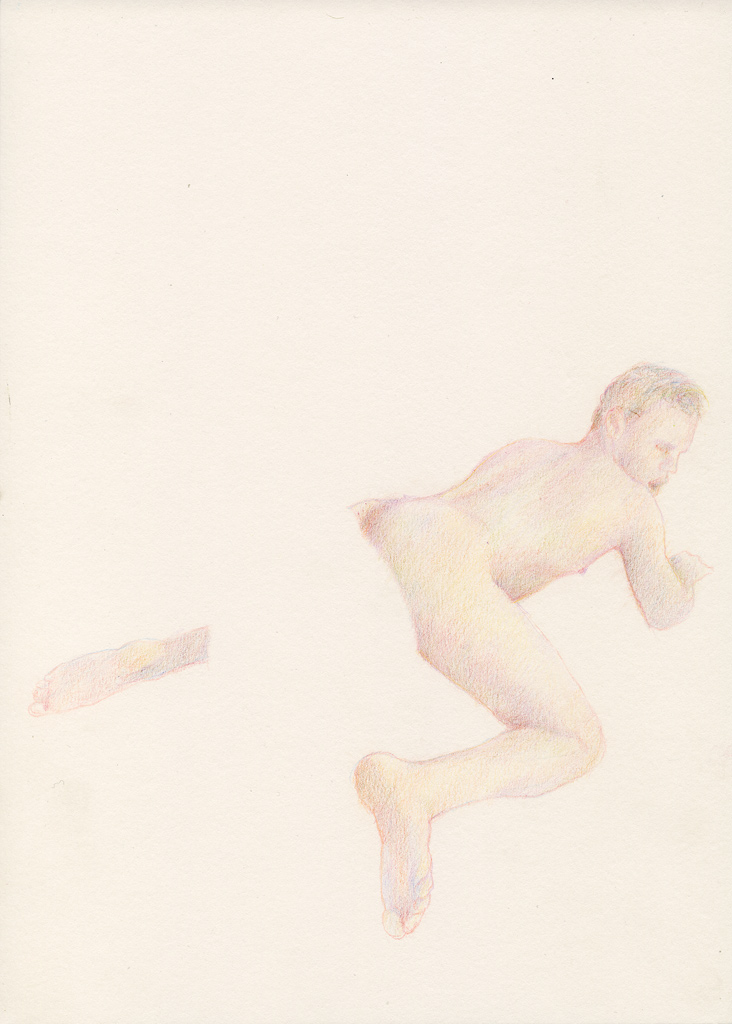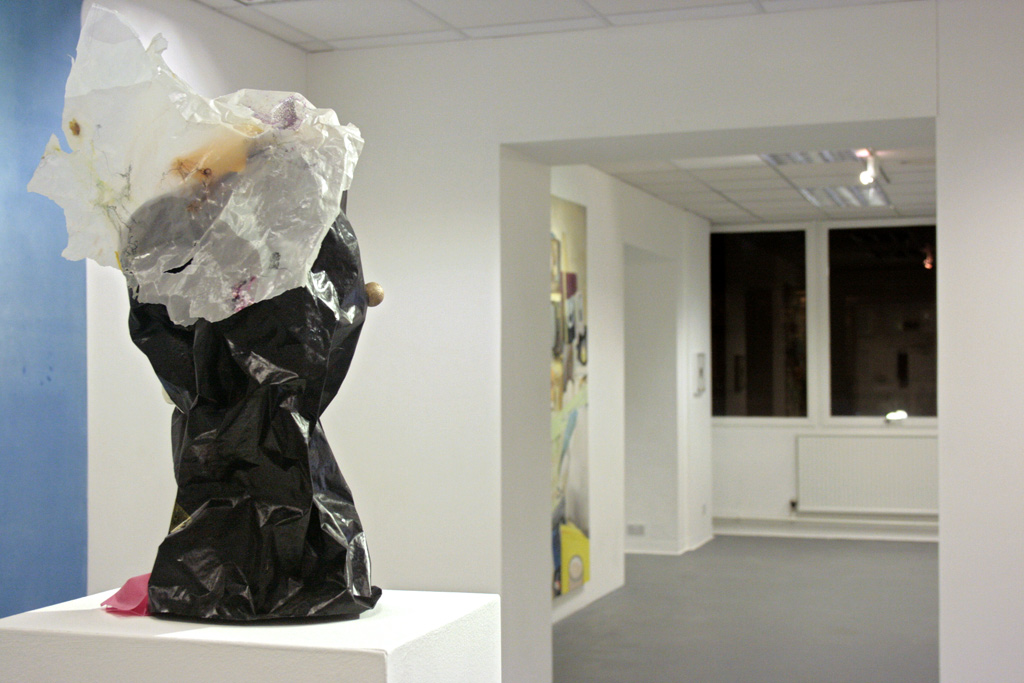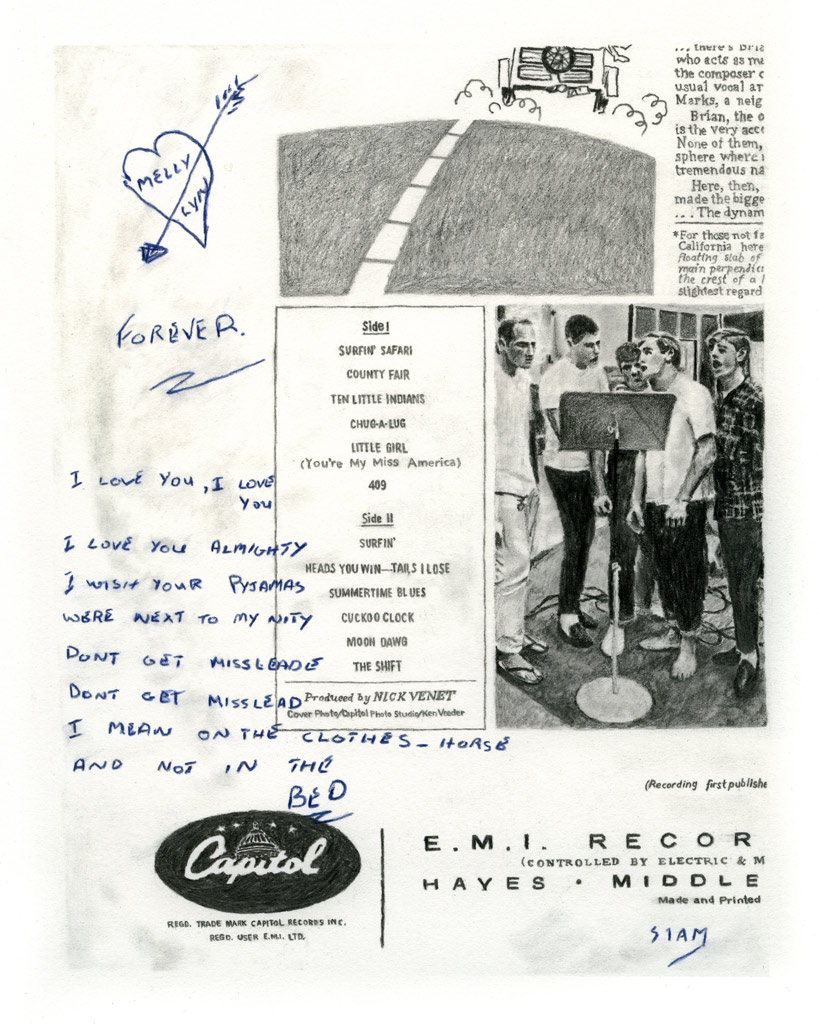Between fact and fiction
Kerstin Drechsel, Nick Fox, Simon Le Ruez, Dodda Maggý, Jock Mooney, Michael Mulvihill, Stephen Palmer, Narbi Price, Morten Schelde
30 January – 1 March 2014
‘Between fact and fiction’, 2014, installation view.
‘Between fact and fiction’, 2014, installation view.
‘Between fact and fiction’, 2014, installation view.
‘Between fact and fiction’, 2014, installation view.
‘Between fact and fiction’ juxtaposes artists from Denmark, Germany, Iceland, and the UK, who make work that documents real-life situations – Kerstin Drechsel, Michael Mulvihill, Stephen Palmer, and Narbi Price – with those that construct their own imaginary or fantasy worlds – Nick Fox, Simon Le Ruez, Dodda Maggý, Jock Mooney, and Morten Schelde.
The theme explored within this grouping of artists expands on a duality that has existed throughout art history: whether an artist primarily explores the external, perceived world, or mines the internal, psychological world, both areas of aesthetic exploration produce their own truths and reality
The Memory Palace (II), 2013, coloured pencil on paper, 199.5x150.5cm
Michael Mulvihill, The End of History (London 1), 2014, graphite on paper, 20.5x13cm
Nick Fox, Blue Moon - Double Portrait, 2012, cyanotype on Heritage Rag, 265x185cm
Kerstin Drechsel’s portraits and interiors document her subjects’ lives and environments with both truthfulness and empathy. Drawing on an eclectic range of sources – images taken from the internet, magazines, books, and her own snapshots – Drechsel’s use of oil and watercolour transforms this stark material into a poignant homage to obsession and aspiration. Here, two of her ‘messies’ (as the artist calls them) document the accumulated possessions in an anonymous apartment, leaving the viewer to speculate as to the owner’s personality based on the things they surround themselves with.
Michael Mulvihill’s small, heavily worked drawings portray the modern, urban world as if on the brink of collapse. His is a dark, apocalyptic vision: iconic images of Western cities loom dark and menacing, mushroom clouds from atomic bomb tests remind us of humankind’s capacity for destruction, and portraits of historical figures seem to be dissolving, fading into oblivion. Following studies of the architectural landmarks of Chicago and Berlin, more recently he has turned his attention to London.
Stephen Palmer transcribes the ephemera of everyday life – including second-hand records to newspaper clippings – into paint and pencil with exquisite precision. His coolly analytical approach belies a longing to create an order from the chaos of the mundane, as well as a wistful nostalgia for the simpler pleasures of youth.
Narbi Price questions how our perceptions and feelings for a place are shaped by our knowledge of that location’s history. Taking as his starting point events of historical or cultural significance, Price revisits the associated sites and portrays them as they are: mundane, ordinary, and unglamorous. Whilst Price’s work questions how meaning is read into painting, at the same time his skill produces beautiful, accomplished canvases. Here he depicts sites both far and near: Malecón, the esplanade on the harbour in Havana, Cuba, a site for both visiting foreign tourists as well as departing Cubans fleeing their own country, alongside the location of the Lambton Well, a significant site in the folklore of North East England, celebrated in the song, The Lambton Worm.
Nick Fox draws on a wide repertoire of techniques to create lyrical, poignant and mysterious images of longing and desire. Taking his sources from art history, pornography, traditional crafts, folklore and myth, Fox constructs dream-like visions, full of layered, half-concealed meanings. Fox refigures the taboo or profane image into one of intimate, poetic beauty. Two of his delicate drawings are shown alongside a cyanotype (an image made directly by exposing photosensitive paper to light) where the image is formed by a sleeping couple.
Simon Le Ruez’s work exists in a state of aesthetic, psychological and physical tension, moving constantly between concealment and revelation, transgression and release. Often using the most delicate and ephemeral of materials, his work blurs the distinctions between the found and the internalised image, evolving a commentary on and around various forms of opposition.
Narbi, Price, Untitled Malecón Painting, 2013, acrylic on canvas, 91x122cm
Narbi Price, Untitled Well Painting, 2013, acrylic on canvas, 91x122cm
Dodda Maggý creates lyrical and poignant narratives that explore different, sometimes conflicting, aspects of her personality. Working in various media – audio/visual installation, film, music, sound art and silent moving images – Maggý attempts to externalise the internal dimensions of dreams, memories and imagination. Here, the artist herself appears to be playing an adult version of ‘peek-a-boo’ with the viewer, both inviting and denying their gaze.
Jock Mooney dredges up grotesques from his subconscious, distilled from underground comics, horror films, Japanese manga, religion, and history. Mooney presents a highly personal vision of the world as a carnivalesque parade, both horrific and comic by turns, which he renders in minutely detailed drawings and sculptures.
Morten Schelde’s paintings and drawings delve into a mythic world of psychological exploration and primal fears. His work depicts the intersection of physical and imaginary spaces, blurring reality and fiction in the process. Within his ‘inner landscapes’ Schelde creates a new universe, where the unfamiliar penetrates: objects cease to be controlled by gravity, interior becomes exterior, background becomes foreground, and every element is in a state of metamorphosis.
Take a video tour of the exhibition
Share this page




















